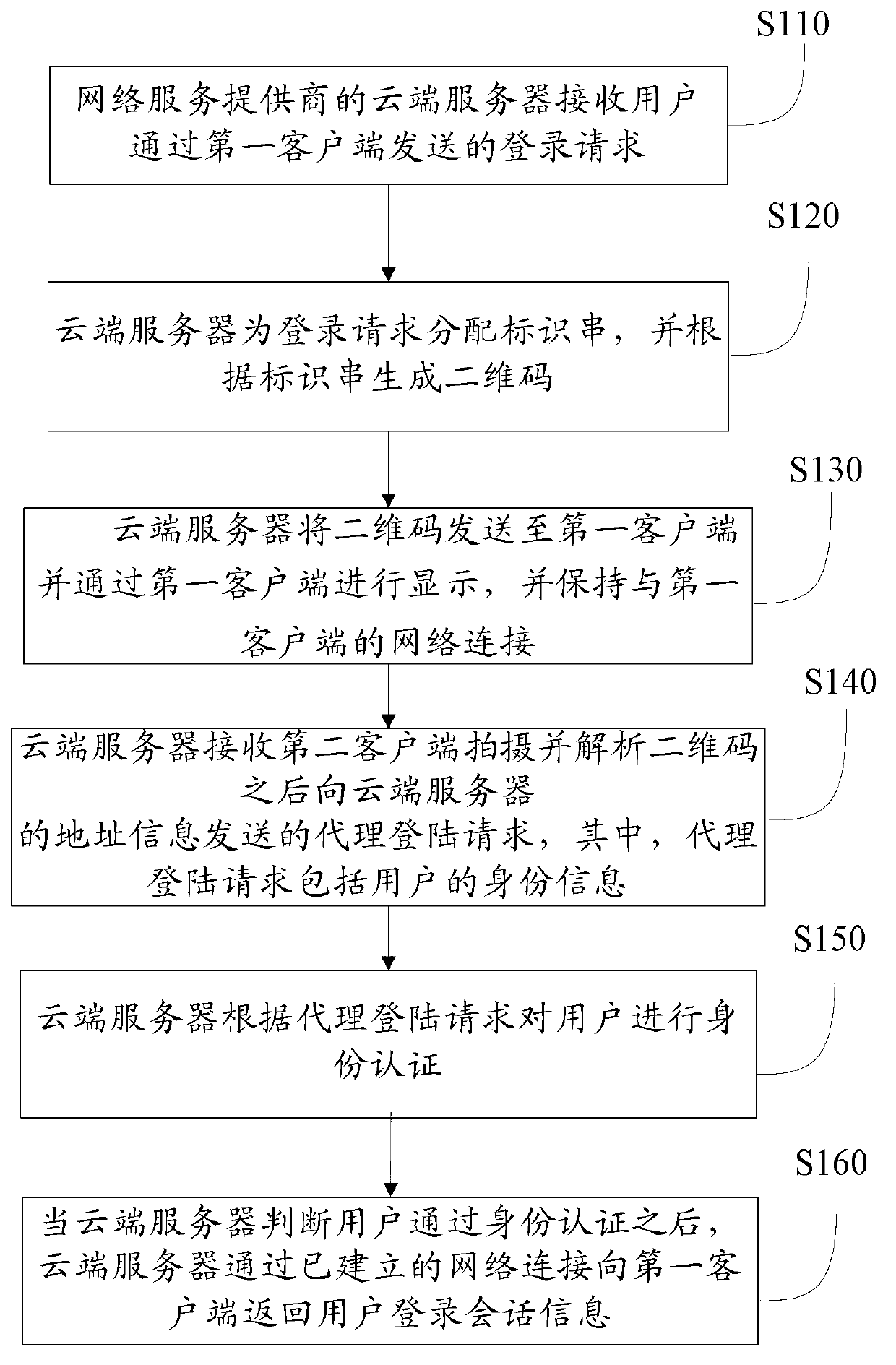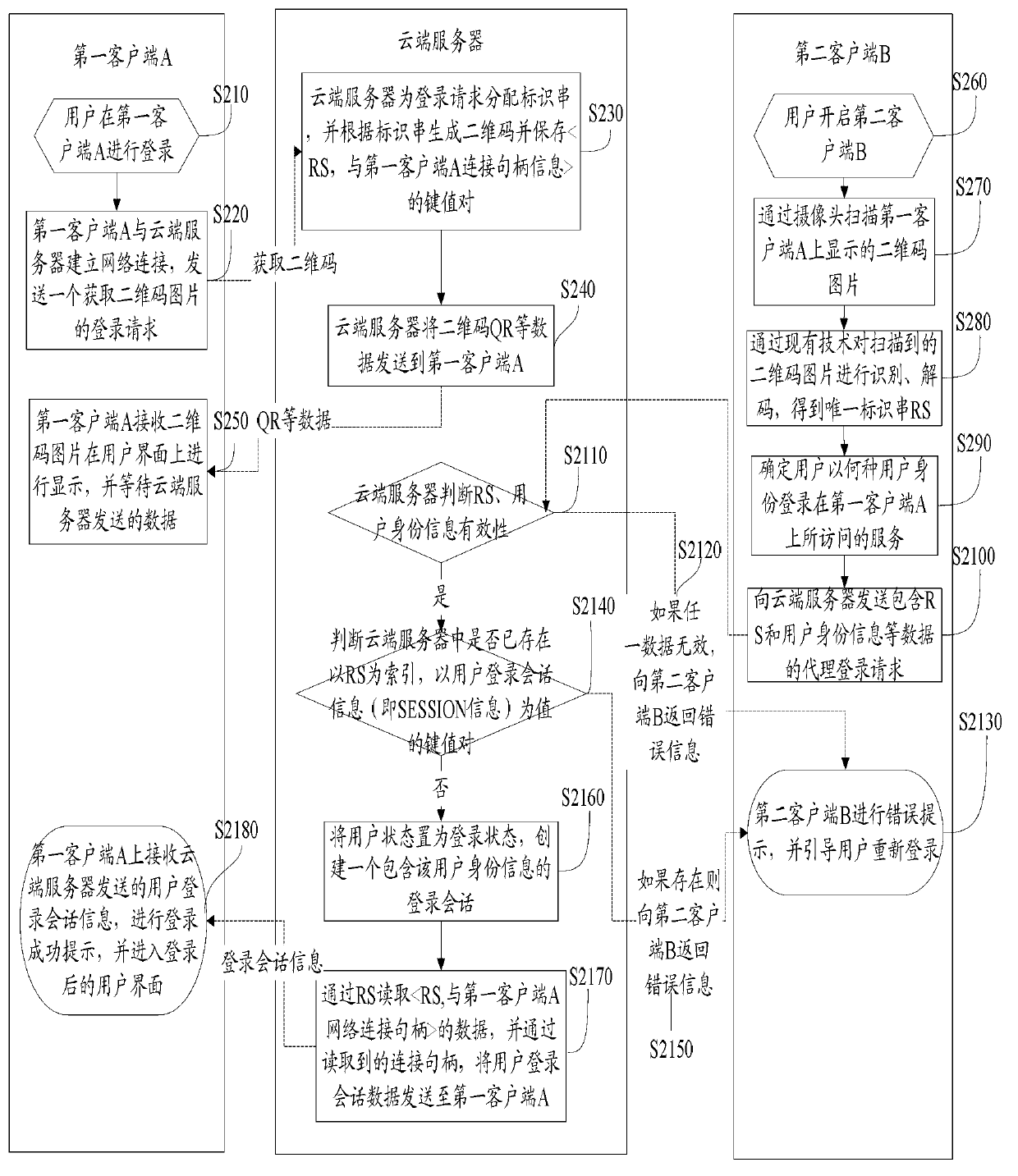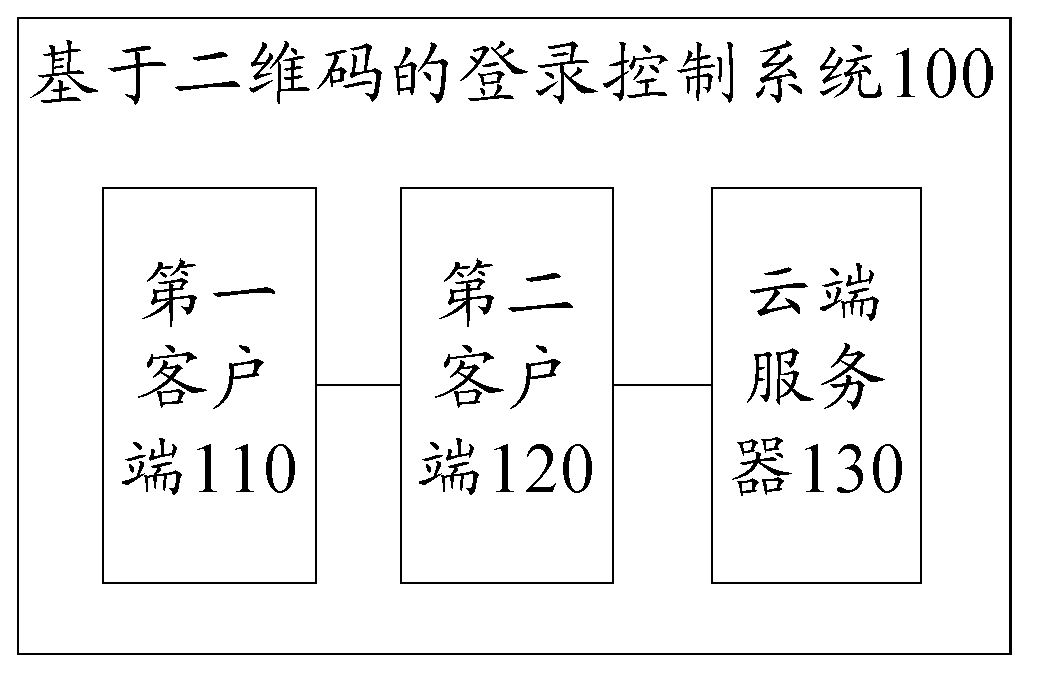Method, system and device used for controlling login and based on two-dimensional code
A control method and control system technology, applied in the field of mobile Internet, can solve problems such as poor user experience, forgotten account number, password, and high cost, and achieve the effects of improving user experience, ensuring security, and reducing operating costs
- Summary
- Abstract
- Description
- Claims
- Application Information
AI Technical Summary
Problems solved by technology
Method used
Image
Examples
Embodiment Construction
[0044] Embodiments of the present invention are described in detail below, examples of which are shown in the drawings, wherein the same or similar reference numerals designate the same or similar elements or elements having the same or similar functions throughout. The embodiments described below by referring to the figures are exemplary only for explaining the present invention and should not be construed as limiting the present invention.
[0045] Refer below figure 1 Describe the login control method based on the two-dimensional code according to the embodiment of the present invention, including the following steps:
[0046] Step S110: the cloud server of the network service provider receives the login request sent by the user through the first client.
[0047] Step S120: the cloud server assigns an identification string to the login request, and generates a two-dimensional code according to the identification string.
[0048] Step S130: the cloud server sends the QR co...
PUM
 Login to View More
Login to View More Abstract
Description
Claims
Application Information
 Login to View More
Login to View More - R&D
- Intellectual Property
- Life Sciences
- Materials
- Tech Scout
- Unparalleled Data Quality
- Higher Quality Content
- 60% Fewer Hallucinations
Browse by: Latest US Patents, China's latest patents, Technical Efficacy Thesaurus, Application Domain, Technology Topic, Popular Technical Reports.
© 2025 PatSnap. All rights reserved.Legal|Privacy policy|Modern Slavery Act Transparency Statement|Sitemap|About US| Contact US: help@patsnap.com



